UK Drive: Alfa Romeo’s Stelvio brings real flair to a congested segment
The Alfa Romeo Stelvio is the Italian manufacturer’s first SUV. Jack Evans gets behind the wheel to see how it fares on UK roads

What is it?
Yes, that’s right, it’s yet another SUV. However, whereas most four-wheel-drives have an Audi, BMW or Mercedes badge on the front, this is built by a company known for doing things slightly different – Alfa Romeo. The Stelvio is Alfa’s very first SUV, and it enters into an incredibly busy segment. Having already knocked it out of the park with the excellent Giulia saloon, can Alfa repeat the recipe with the larger Stelvio? Let’s find out.
What’s new?
Alfa Romeo, being a manufacturer of dynamically capable vehicles, has worked hard to ensure that the Stelvio is geared towards ‘sporty’ driving more than other SUVs on the market today. As such you’ll find that it has perfect 50/50 weight distribution, and suspension set up to provide a more dynamic drive rather than an overtly comfortable one.
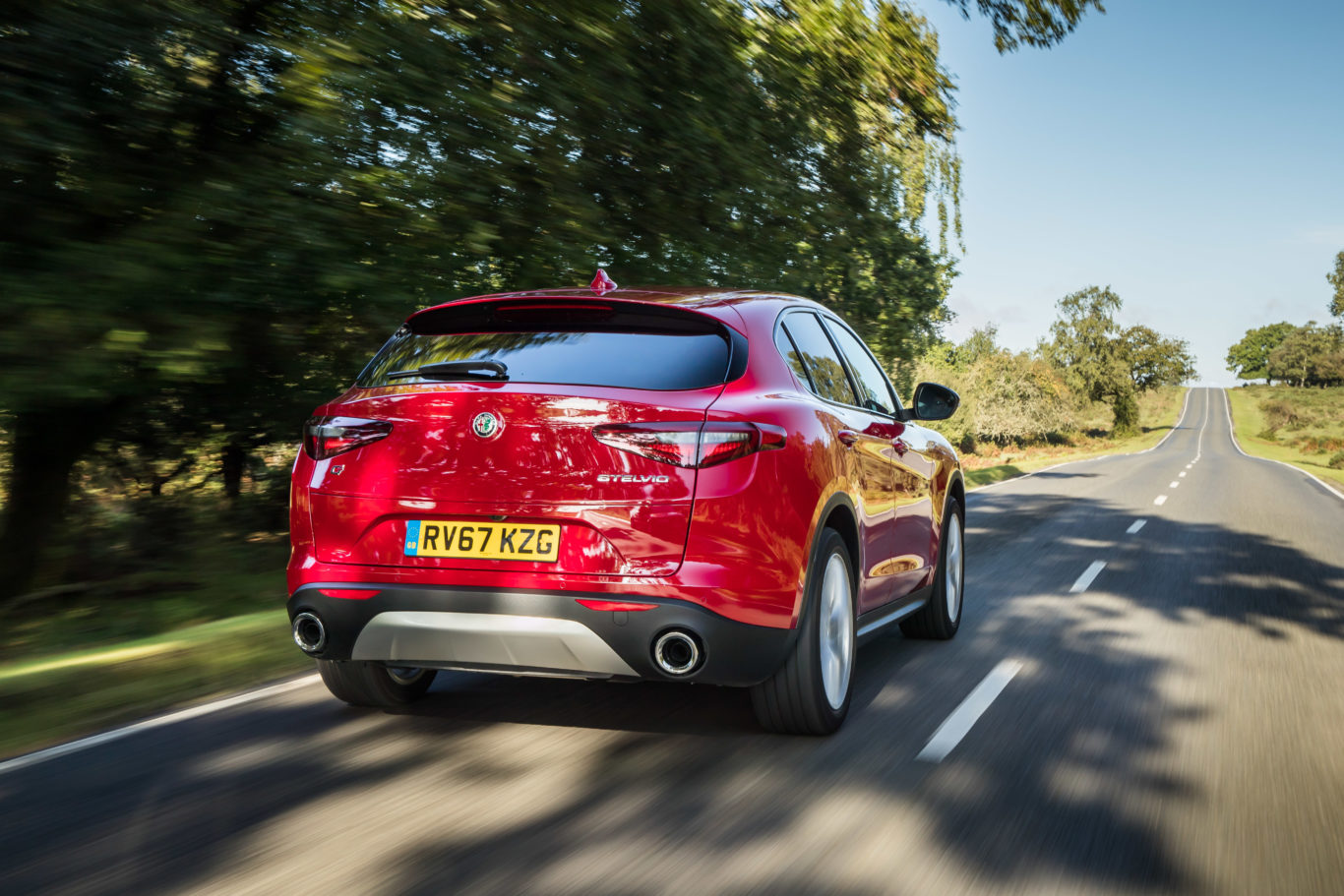
It’s also carried over many of the features which were so popular on the Giulia saloon; the gearshift paddles, for instance, are massive and crafted from aluminium, while the steering rack is quicker than you’d expect – another trait of the Giulia.
What’s under the bonnet?
Though the Stelvio is available with a range of engines, our test car came fitted with the most powerful unit – a 2.2-litre, 207bhp turbocharged powerplant. The performance it provides is brisk, with the sprint to 60mph settled in 6.4 seconds while the Stelvio’s top speed is set at a respectable 134mph. Despite this, the Stelvio still has a claimed economy of 58.9mpg, while emissions are reasonable at 127g/km CO2.
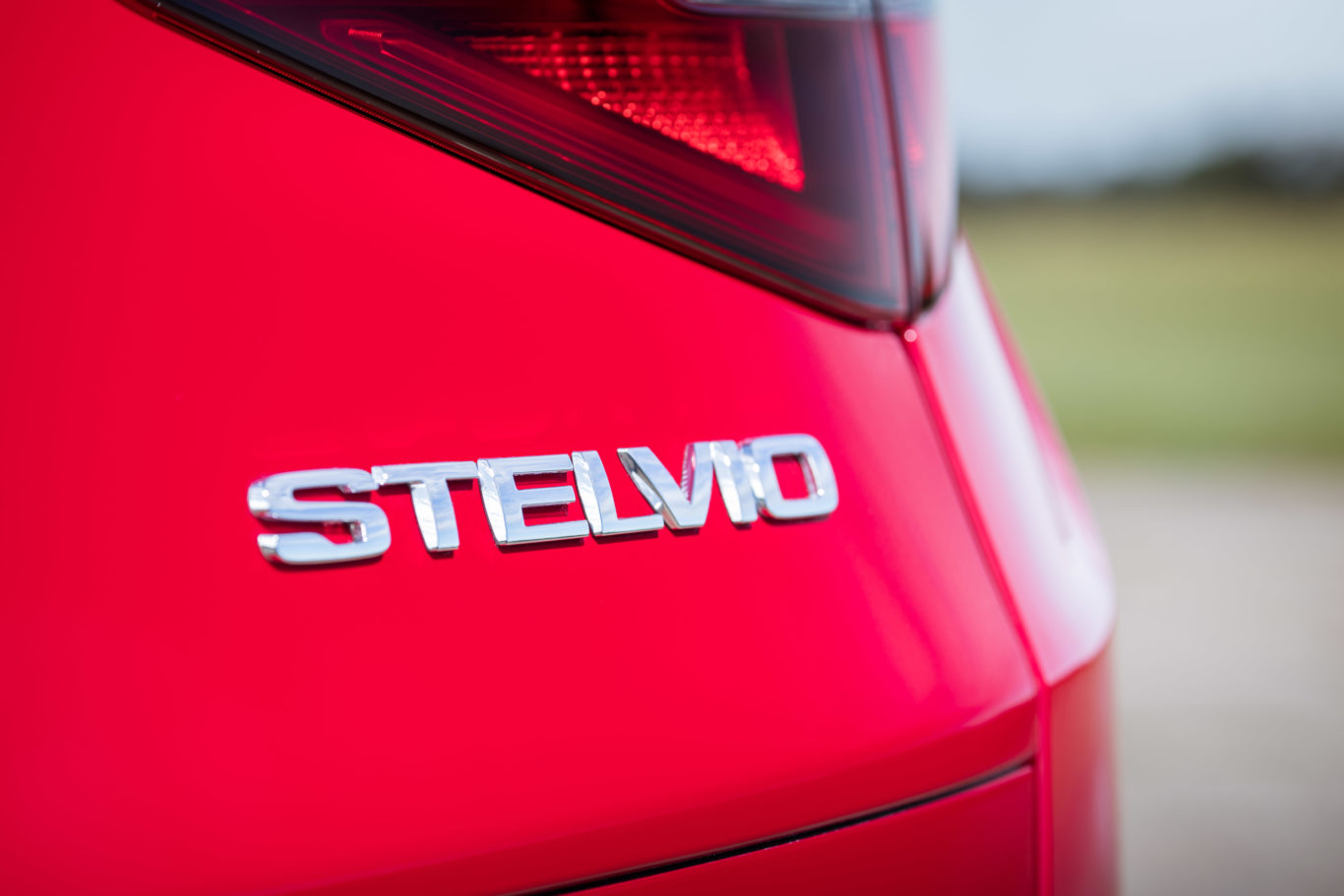
Save for the very lowest-output cars, all Stelvios benefit from four-wheel-drive, aiding traction levels in poor conditions. Power is driven to them via an eight-speed automatic gearbox, and there’s a decent amount of torque generated by the engine to keep the whole affair pushed along – 470Nm in fact, which is a good slug of pushing power for a car of this size.
What’s it like to drive?
As we mentioned, the Stelvio has been designed to sit on the more dynamic end of the SUV spectrum, and as such it rides and drives in a slightly different way to a conventional four-wheel-drive.
The ride suffers a little at low speeds, with its overall firmness transferring imperfections on the road surface into the cabin. It means that when pottering around town, the Stelvio feels a little unsettled. However, as you increase in speed the car’s suspension begins to make sense, where it manages body roll well and allows you to corner confidently. The steering is, as mentioned earlier, quite quick too, and this gives the whole car an eagerness when turning in – again, another plus point when travelling at faster speeds.
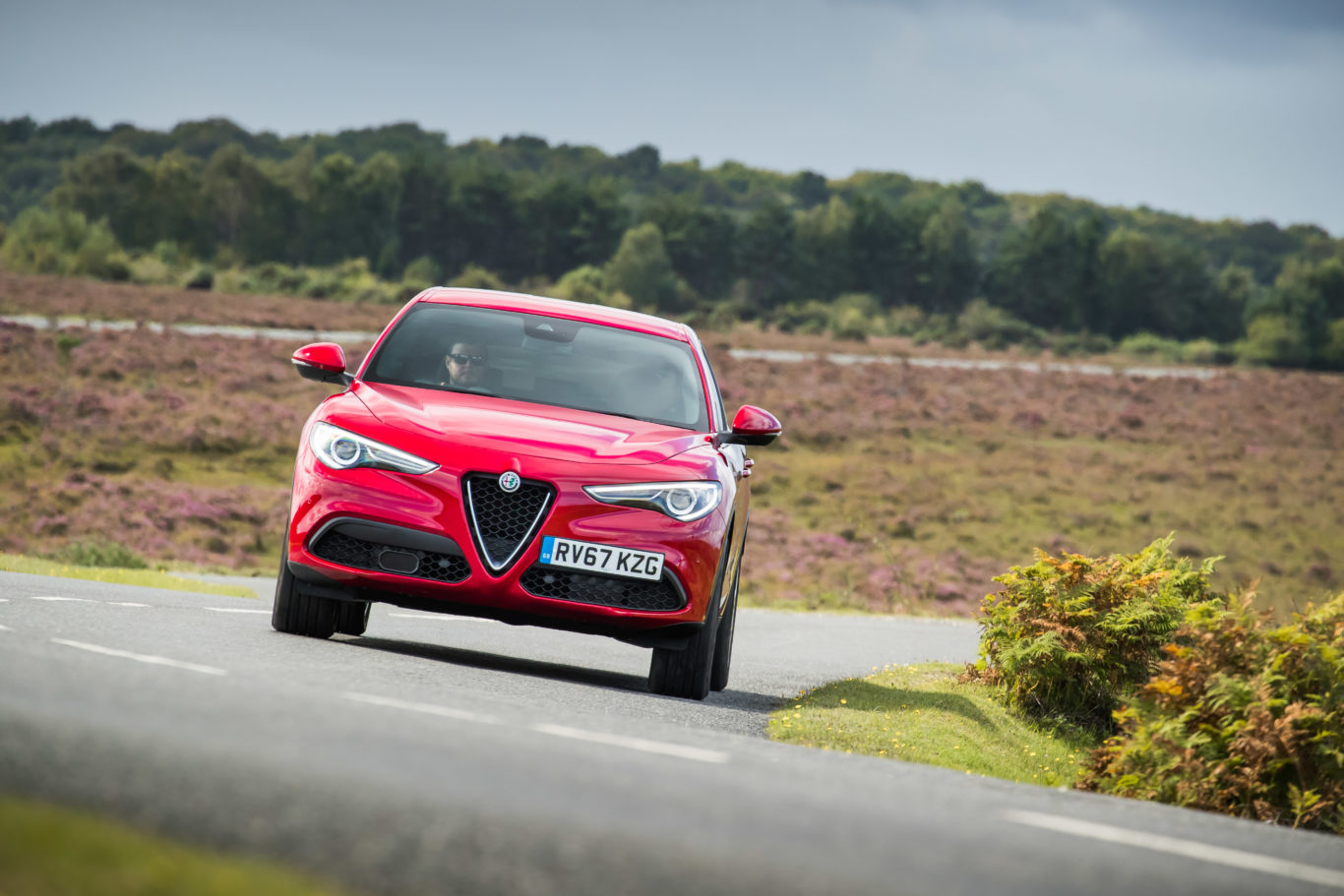
One aspect which threw up a few issues was the fuel gauge – on our car, the estimated fuel readout would change wildly, varying by hundreds of miles at any given time. At one point it showed 40 miles of range remaining, but this dropped to zero after one corner.
How does it look?
The Stelvio has been infused with all of the design touches you’d expect from an Alfa Romeo. There’s the large triangle grille at the front, angled headlights and, of course, the all-important offset number plate. It’s a good looking design, and it looks markedly different to the remaining offerings in the SUV segment.
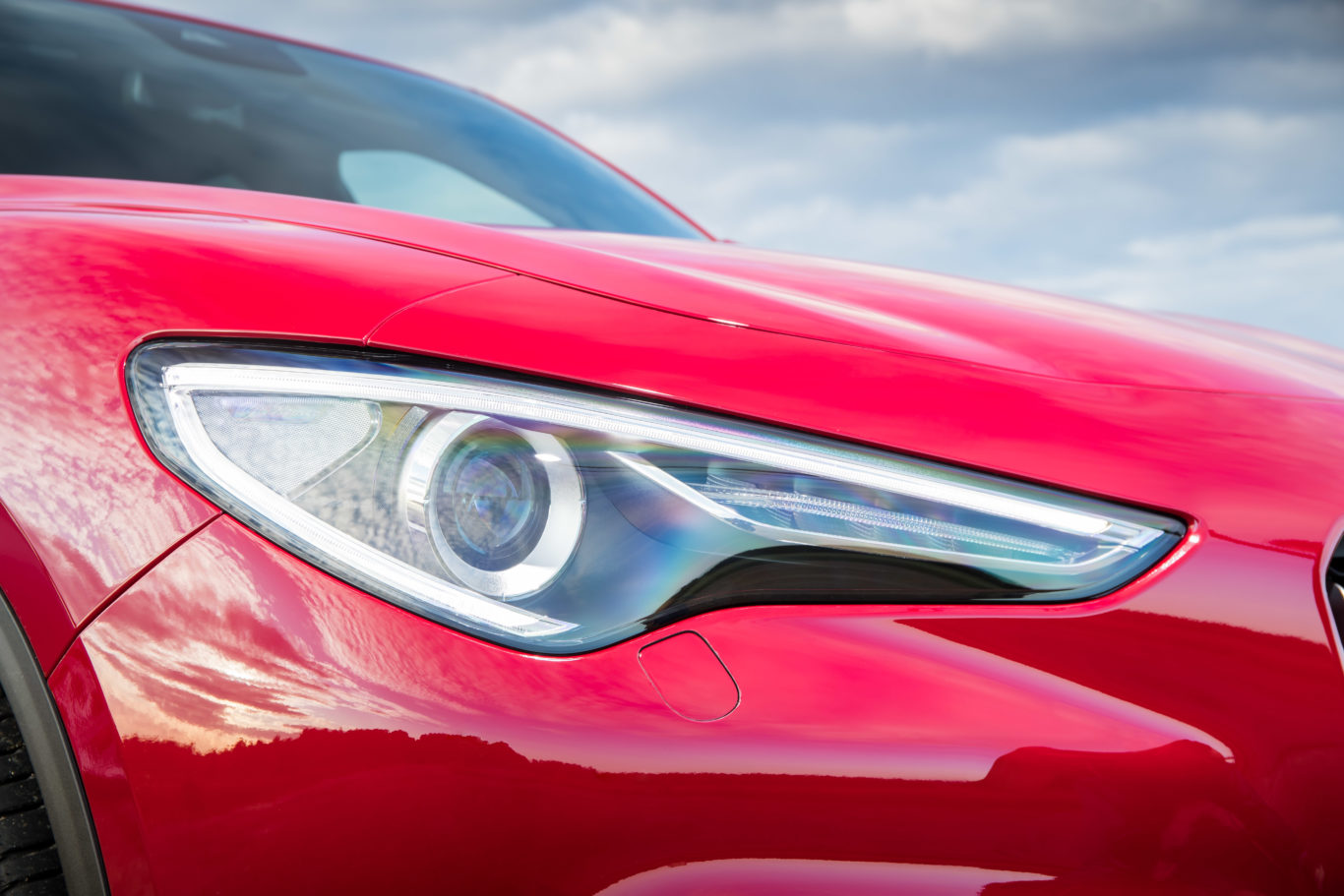
Our test car also featured yellow brake calipers and 19-inch 10-spoke alloy wheels, which aided the overall sporty look. Certainly, against the rounded silhouettes of cars such as the Porsche Macan and BMW X3, the Stelvio’s edgy styling makes it stand out. The rear end of the car is particularly strong, with large (really quite large, in fact) exhaust pipes giving the car a particularly sporty appearance.
What’s it like inside?
The interior of the Stelvio covers the basics well; the steering position is good, the steering wheel itself has plenty of adjustment and the electric front seats can be set to exactly the right position with little effort. There are harsher plastics here, for sure – the material used for the gearshift surround is quite hard, and the gearstick itself has an annoyingly sharp edge to it, but for the most part it’s a comfortable and well-made place to be.
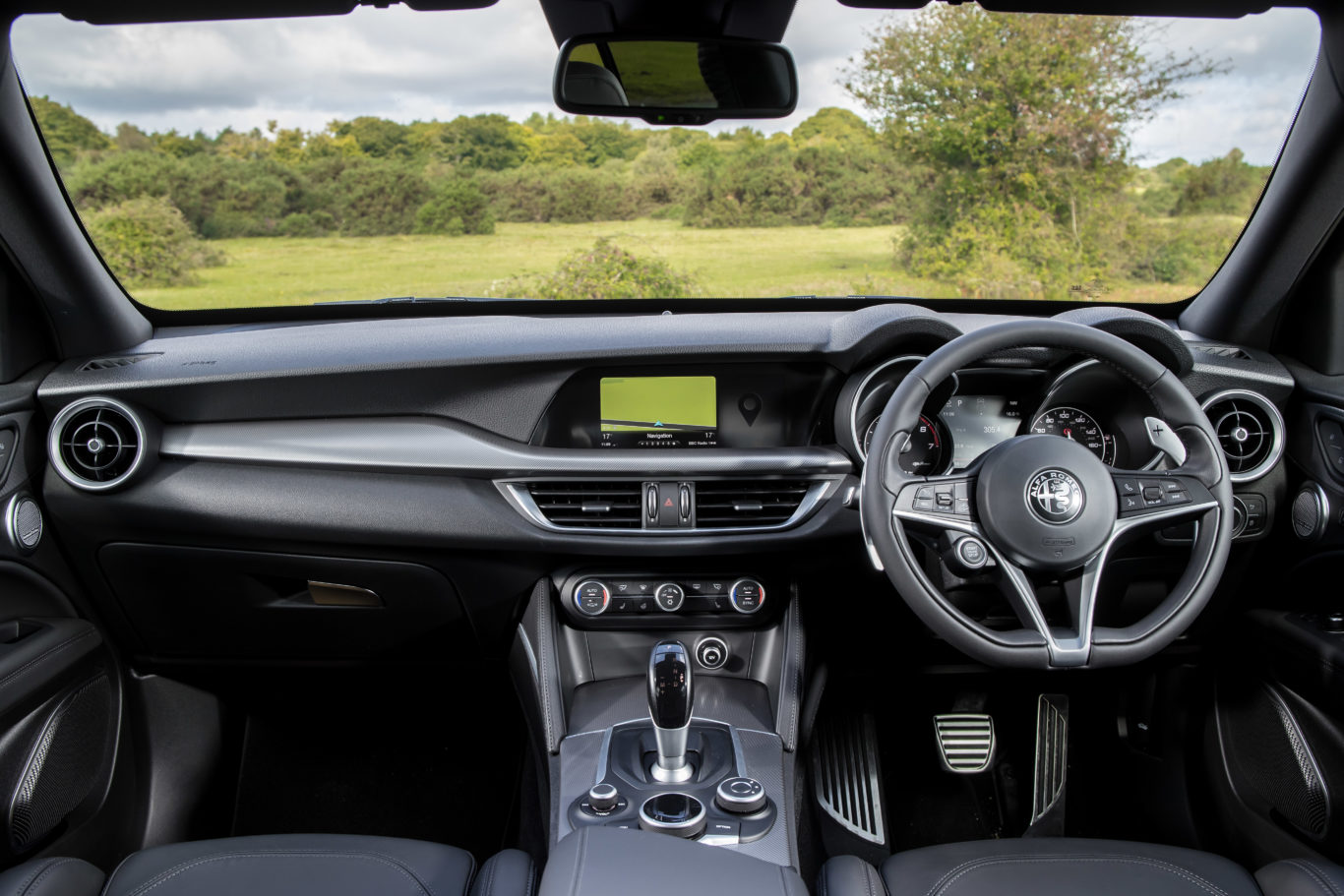
The rear seats offer plenty of space too, and though the sloped roofline does cut into headroom levels somewhat, there should more than enough for average-sized passengers. The Stelvio does well in terms of boot space as well, with its 525 litres of seats-up capacity trumping that of the Porsche Macan.
What’s the spec like?
Prices for the 2.2-litre diesel-powered Stelvio start at £38,490, and there’s a lot of standard equipment included as part of this price. You get 18-inch alloy wheels, front and rear parking sensors and a lane departure warning system included, as well as a power tailgate and an eight-speaker sound system.
Our test car featured the larger, eight-inch infotainment screen (a smaller seven-inch unit is included in lower-spec models), and this houses features such as satellite navigation and media functions. It’s easy to navigate thanks to a simple rotary controller, but it lacks the definition of rival offerings – it looks just a few generations behind other infotainment systems currently available.
Verdict
The Stelvio does things a little differently compared to usual SUVs. It’s still a comfortable cruiser, but it comes alive when the roads get twisty, and exhibits a driving experience like few other cars in its segment. It looks special too, and does well to appear different against the vast amount of similarly-sized cars currently on the roads. Though it may not be quite as refined as rivals – the Audi Q5 is far better behaved on rougher surfaces – the Stelvio offers up just a touch more involvement for the driver, which is why it’s well worth considering.





